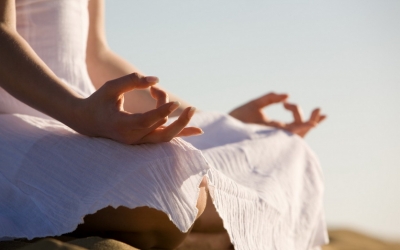
Despite its benefits , the poses and the chanting can be too much of a stretch for some males, writes Eric Niller.
At a recent visit to a yoga studio, I watched as practitioners breathed, bent, twisted and stretched their way to a happier state. They left more relaxed, more energised, with better posture and a renewed outlook. But there was one curious thing: of the 24 people in the room, only four were men.
Yoga devotees say that this disparity is not unusual, no matter the time of day. Typically, they say, the ratio of women to men rarely goes much below 80-20. In fact, a 2012 survey by Yoga Journal found that of the 20.4 million people who practise yoga in the United States, only 18 per cent of them were men.
Why don’t men do yoga?
My husband said he felt bored,” says one woman whose partner was visiting the Washington studio on a day off. “He didn’t let himself enjoy it.”
She is like many women who do yoga and want their spouse or partner to give it a try. But the many myths about yoga stand in their way: Yoga isn’t a decent workout; it’s too touchy-feely; you have to be flexible to do it; men’s bodies just aren’t built for pretzel-like poses.
Adrian Hummell has heard all the excuses.
“What happens is, a guy who doesn’t know about it associates it with things like pilates or aerobics,” says Hummell, who has been doing yoga for the past three years and now teaches Bikram yoga, a particularly strenuous form of the practice, in Maryland. They think of it as a “women’s workout”, he says.
“It’s almost a joke when guys say, ‘I don’t think I should do yoga because I’m not flexible,’ ” he says. “It’s like saying, ‘I’m too weak, so I can’t lift weights.’ ”
Hummell and many other yoga practitioners extol its many benefits beyond a pleasant post-class buzz. Several studies have linked a regimen of yoga classes to a reduction in lower back pain and improved back function. Other studies suggest that practicing yoga lowers heart rate and blood pressure; helps relieve anxiety, depression and insomnia, and improves overall physical fitness, strength and flexibility, according to the US National Centre for Complementary and Alternative Medicine, a branch of the National Institutes of Health. Still, despite many studies, no firm evidence has been found to show that yoga improves asthma or arthritis.
The centre is funding research to determine whether yoga can benefit in the treatment of diabetes, AIDS, post-traumatic stress disorder and multiple sclerosis.
Loren Fishman, a Manhattan physician who sees patients suffering from a variety of ills, says his prescription is often yoga.
Fishman has written several books on using yoga as a supplement for rather than as a substitute for medicine. He has studied yoga since the early 1970s and noted that the practice was developed centuries ago by men in India. But its modern form has become feminised.
“There’s been a flip,” Fishman says. “When it came to the US, yoga became a sort of gentle gym, a non-competitive, non-confrontational thing that’s good for you. Yoga has this distinctive passive air to it. You get into the pose and stay there.”
Among those who reject the idea that yoga is just for women is Danny Poole, a Denver teacher and trainer who uses yoga to help athletes. In 2009, his students included about a dozen members of the Denver Broncos.
Poole came to the practice reluctantly himself. A basketball player at Grand Valley State University in Michigan four decades ago, he was dragged into a yoga class by his girlfriend.
“All I knew is that there were hippies doing it, and I was intimidated because I didn’t know what it was,” Poole said. “Then I got hooked on it because I never felt so good.” Poole kept up with yoga and said it helped him avoid sports injuries as he grew older. About 15 years ago, he went full-time as a teacher.
Poole decided to drop some of the elements of a traditional yoga class that could turn off men: no chanting, no Sanskrit terms for poses, no music, no headstands or handstands that are difficult and prone to causing injury. “I keep it easy and gentle, and I avoid trying to make the client not look good,” he said.
Poole says professional athletes like yoga because it keeps them loose and focused before a game and helps ease post-game soreness. During his year with the Broncos, he says, he kept his yoga group injury-free. But he understands why many men, especially former athletes and men who have spent years pumping iron, have trouble with the physical and mental aspects of yoga.
“Athletes with big muscles take a regular yoga class and it kicks their butt,” Poole says. “They tend not to come back.” But Poole said that those who stuck with the yoga program remained injury-free during the football season, which turned the doubters into converts.
When men say they are bored with yoga, Poole thinks there may be something else going on.
“Our egos are deflated because we can’t do some of the poses,” he said.
Source: The Age





